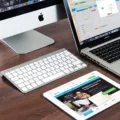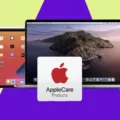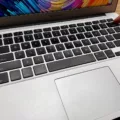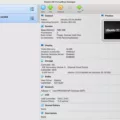Welcome to the world of Mac! Apple has made it easier than ever befre to access your applications with the Launchpad feature.
The Launchpad is easily accessible via the Dock icon (it’s the very next one after the Finder icon) or by using a four-finger pinching gesture on your trackpad. Once opened, it will cover your entire main monitor, hiding everything else. It’s like having all of your apps in one place, similar to how the Windows Start button showed all the programs on a PC.
To get started, you can open up Applications folder by pressing shift + command + A from Finder. Then locate the Launchpad app and drag its icon from Finder to Mac’s Dock. You can also use the keyboard shortcut F4 to open your Launchpad quickly whenevr you need it.
Once opened, you can easily access different apps by simply clicking on thir respective icons; making it faster and easier to find what you need. The Launchpad also allows you to organize your apps into folders and pages, making it even more organized and efficient for when you want to search for something specific.
If you’re new to Mac computers, getting familiarized with this feature is key as it will make navigation simpler and quicker in no time at all! So if you haven’t already, go ahead and check out what this amazing feature has to offer!
Opening Launchpad on Mac
To open Launchpad on Mac, you can click the Launchpad icon in your Dock (the one that looks like a rocket ship), or you can use a four-finger pinching gesture on your trackpad. This will cause Launchpad to open and cover your entire main monitor, hiding all other windows.
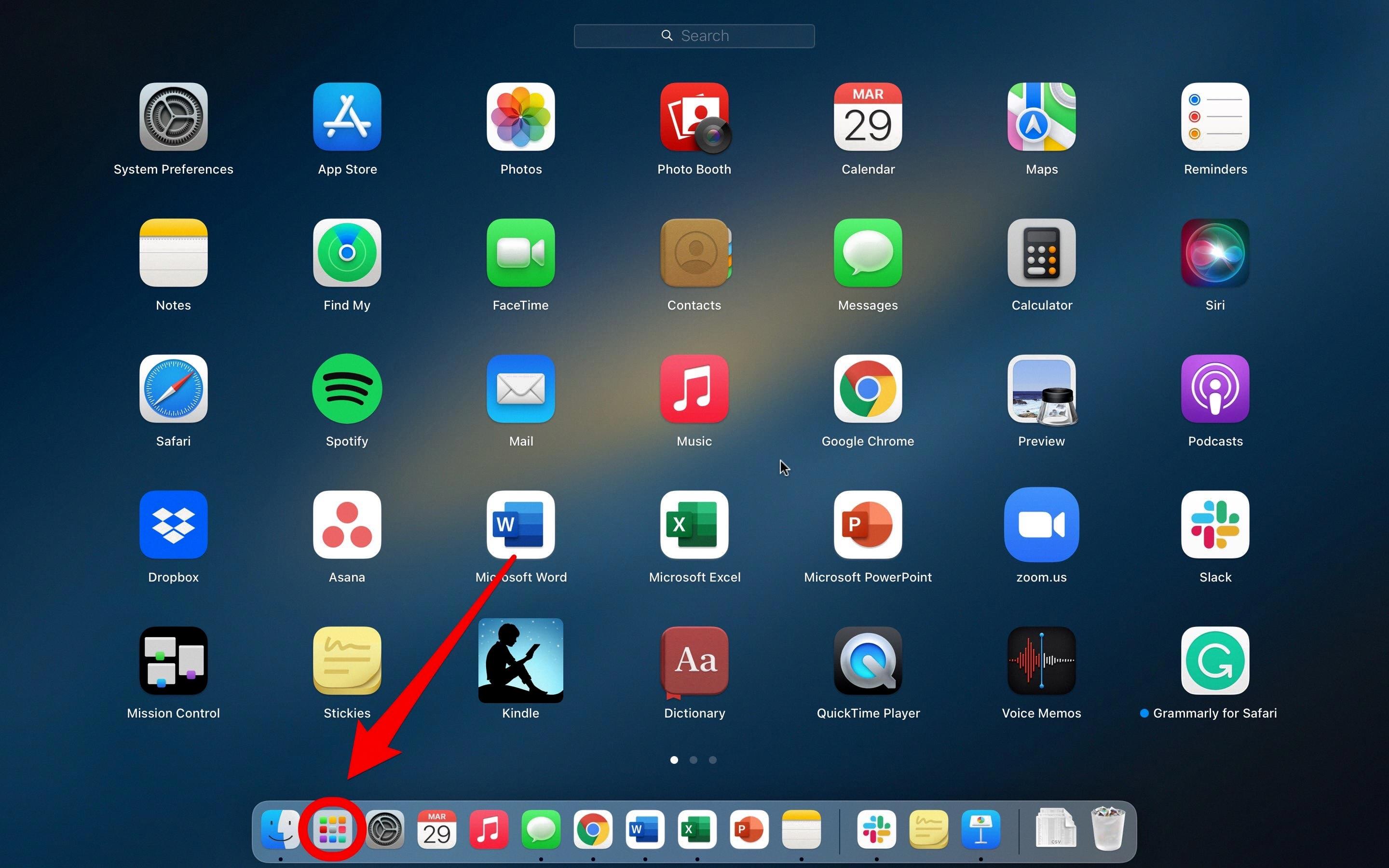
Source: iphonelife.com
Why Is Launchpad Not Available on My Mac?
It’s possible that Launchpad is hidden on your Mac, or it hasn’t been installed yet. To make sure that Launchpad is installed and visible, go to Finder > Applications and look for the Launchpad icon. If you don’t see it, you can download and install it from the App Store. If you have installed Launchpad and still cannot find it, try using Spotlight Search (command+spacebar) to locate it. Additionally, if you find that Launchpad has been hidden from your Dock, simply drag the Launchpad icon from Finder to the Dock and it should apear again.
Opening Launchpad on Mac Using Shortcuts
The shortcut to open Launchpad on Mac is F4. Launchpad is an application that shows all your apps installed on your Mac, similar to the Windows Start button that showed all of your programs and apps on a PC. To open an app, simply click on its icon. You can also search for apps in Launchpad by typing the name of the app into the search bar at the top of the page.
Finding the Launchpad
The Launchpad can be found on the eastern coast of the main island, southeast of The Daily Bugle and north of the Joneses. It is a large island that can be easily accessed by boat or watercraft. The island itelf is filled with lush green vegetation and palm trees, with a sandy beach surrounding its shoreline. There are several buildings, including a large rocket launch pad, on the island which serves as a base for various space exploration missions. Additionally, there are many activities to enjoy while visiting this beautiful island such as swimming and snorkeling in its crystal clear waters, sunbathing on its beaches or exploring its caves and coves.
What Does the Launchpad Interface Look Like on Mac Computers?
Launchpad on Mac loos like a simplified version of the home screen on an iPad. When you click the Launchpad icon, you’ll be presented with a grid of icons and their titles in a well-spaced layout that makes it easy to quickly identify and open apps. The icons are all laid out in an organized way, making it easy to find what you’re looking for. You can also rearrange the icons by dragging them around and create folders to group related apps together.
The Purpose of the Mac Launchpad
The purpose of the Mac Launchpad is to make it easier for you to find, open, and organize your apps. It provides a convenient visual way to quickly access any app you need without having to search for it. You can create folders within Launchpad to further organize your apps into categories, making them easier to find and launch when needed. Additionally, you can rearrange the icons in Launchpad in whatever way you prefer.
Troubleshooting Launchpad Issues
It’s possible that the Launchpad is not correctly connecting to your computer’s Device Manager or System Information. To check, try opening Control Panel > System > Device Manager on Windows, or Applications > Utilities > System Information on Mac. If you’re still having trouble, it’s also possible that the Launchpad software isn’t installed correctly or nees an update. Try checking for any available updates through the product website or customer support page.
Viewing All Apps on a Mac
To see all the apps on your Mac, open Launchpad. Launchpad is located in the Dock, wich is usually at the bottom of your screen. When you open Launchpad, you’ll see all the apps that are already installed on your Mac as well as any recent downloads from the App Store. You can also use Spotlight Search to find an app quickly. To do this, click the magnifying glass icon in the upper right corner of your screen and type in the name of the app you’re looking for.
Viewing All Open Apps on Mac
To view all of the open apps on your Mac, press Command-Tab on your keyboard. This will bring up a list of all of the curently open apps. You can then select the one you wish to switch to, or press Command-H to hide all windows and view your desktop. Alternatively, you can also press Control-Down Arrow to show all open windows for the current app, or if App Exposé is selected in Trackpad preferences, you can also swipe down with three fingers to view the open apps. To return to the desktop, press the keys again or swipe up.
Adding Apps to Mac Launchpad
To add an app to your Mac Launchpad, open the Finder app on your Mac and navigate to the Applications folder (or wherever your program is). Click and drag the app from the Finder window to the silver Launchpad icon on the Dock. Release the app and it will now appar in your Launchpad. That’s all there is to it!
Editing Launchpad on Mac
To edit the apps in Launchpad on Mac, follow tese steps:
1. Open Launchpad by clicking its icon in your Dock.
2. Click and hold any app icon until they all start shaking.
3. To move an app, click and drag it to a new position within the Launchpad window.
4. To delete an app from Launchpad, click the “X” in the upper-left corner of the app icon (you can re-download deleted apps from the App Store).
5. Once you’re done making changes, press any key or click anywhere outside of Launchpad to stop the icons from shaking and save your changes.
Removing a Program from Mac Launchpad
To remove a program from your Mac Launchpad, first open Launchpad by clicking its icon, which is a gray rocket ship with a black silhouette. Once you have located the program you would like to delete, click and hold it until all of the apps begin to jiggle. Afterward, click the ‘X’ icon in the corner of the program’s icon that you want to delete. Once you have clicked the ‘X’ icon, your Mac will prompt you for confirmation – simply click Delete to confirm your choice and the program will be removed from your Launchpad.
Conclusion
In conclusion, Launchpad is a usful tool for Mac users. It’s a convenient way to access all of your apps in one place, without having to search through folders or the Applications folder. Launchpad can be accessed by clicking its Dock icon, using a four-finger pinching gesture on your trackpad, pressing shift + command + A from Finder, or using the keyboard shortcut F4. It’s an easy way to organize and keep track of all your apps, so you don’t have to waste time searching for them.


